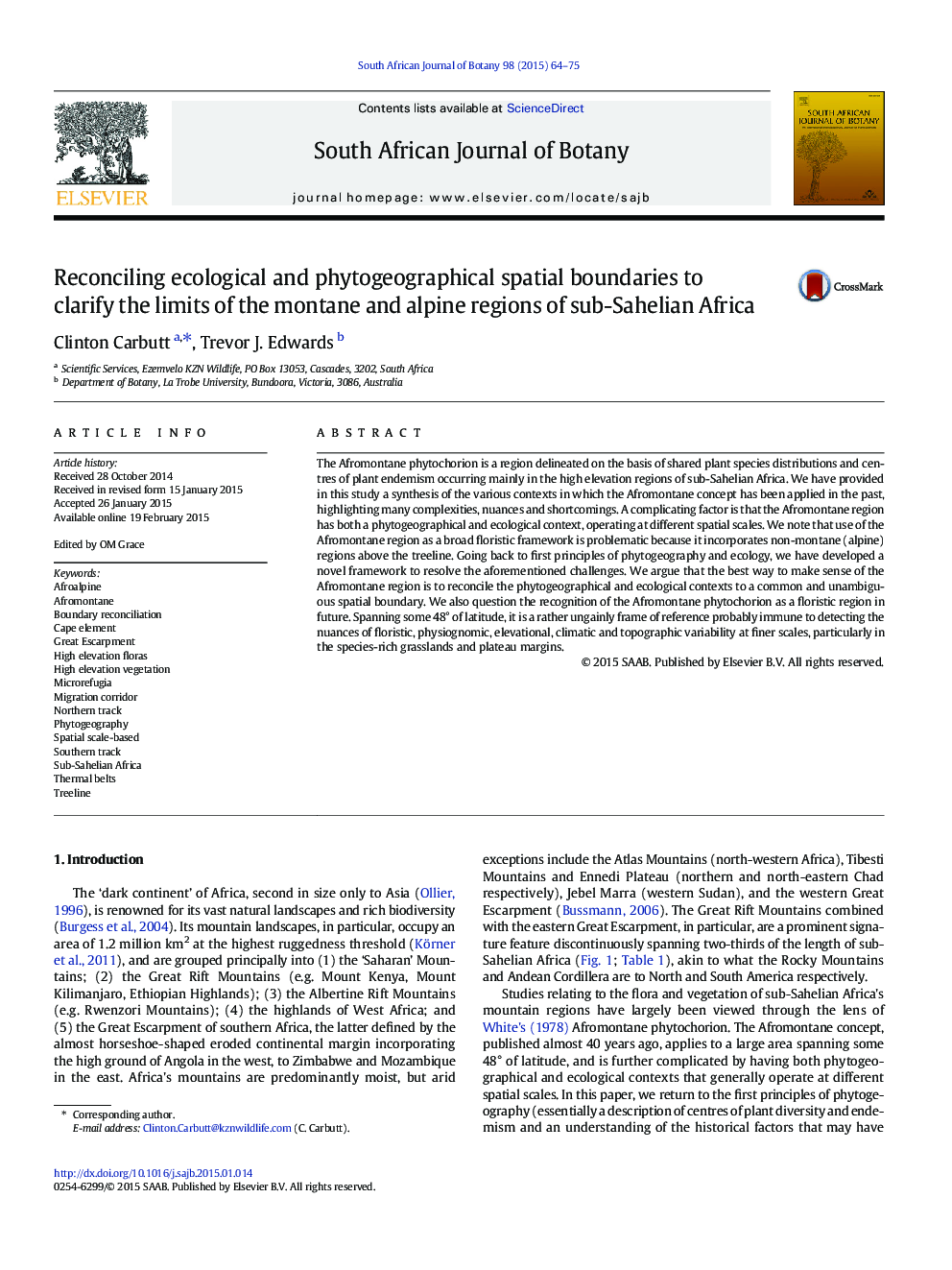| کد مقاله | کد نشریه | سال انتشار | مقاله انگلیسی | نسخه تمام متن |
|---|---|---|---|---|
| 4520461 | 1625160 | 2015 | 12 صفحه PDF | دانلود رایگان |
• The Afromontane phytochorion concept is antiquated and often confusing.
• It involves ecological and phytogeographical contexts operating at different spatial scales.
• We offer a simple and pragmatic solution by reconciling both contexts to a common spatial scale.
• This solution deals with the problematic alpine regions above the treeline.
• This review highlights the complexities, nuances and shortcomings of the Afromontane phytochorion.
The Afromontane phytochorion is a region delineated on the basis of shared plant species distributions and centres of plant endemism occurring mainly in the high elevation regions of sub-Sahelian Africa. We have provided in this study a synthesis of the various contexts in which the Afromontane concept has been applied in the past, highlighting many complexities, nuances and shortcomings. A complicating factor is that the Afromontane region has both a phytogeographical and ecological context, operating at different spatial scales. We note that use of the Afromontane region as a broad floristic framework is problematic because it incorporates non-montane (alpine) regions above the treeline. Going back to first principles of phytogeography and ecology, we have developed a novel framework to resolve the aforementioned challenges. We argue that the best way to make sense of the Afromontane region is to reconcile the phytogeographical and ecological contexts to a common and unambiguous spatial boundary. We also question the recognition of the Afromontane phytochorion as a floristic region in future. Spanning some 48° of latitude, it is a rather ungainly frame of reference probably immune to detecting the nuances of floristic, physiognomic, elevational, climatic and topographic variability at finer scales, particularly in the species-rich grasslands and plateau margins.
Journal: South African Journal of Botany - Volume 98, May 2015, Pages 64–75
